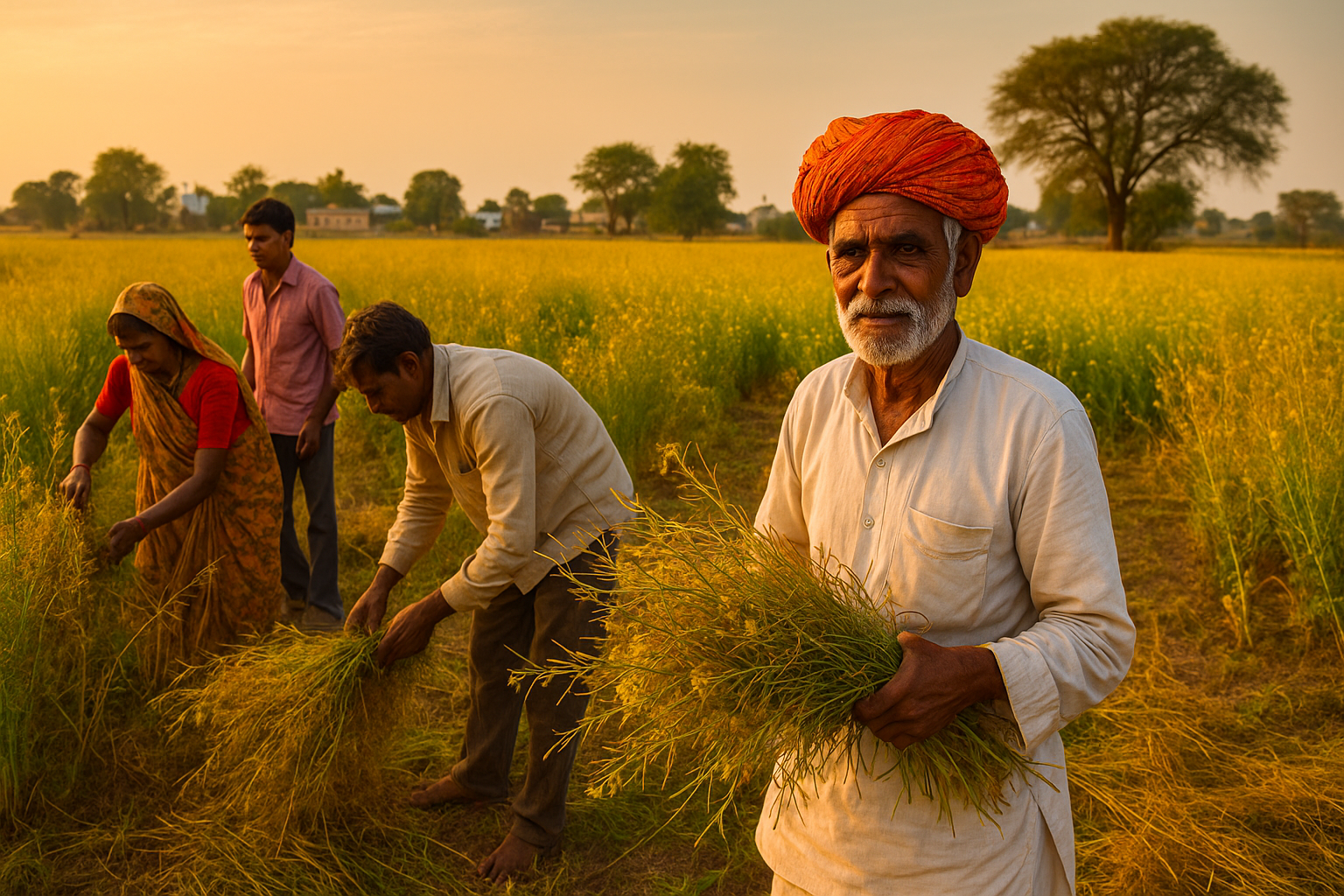Blog
Malav Caste Category

Malav Caste Category: History, OBC Benefits & Modern Challenges
The Malav caste category is a lesser‑known but historically layered branch of the Kirar–Dhakad agrarian community. Classified as an Other Backward Class (OBC) in Rajasthan and grouped with Kirar, Kirad and Dhakad in the central OBC list for Madhya Pradesh, Malav households trace their name back to the ancient Malwa plateau yet continue to adapt to a data‑driven, urbanising India. This 1,000‑word guide unpacks their origin story, legal status, customs, socio‑economic indicators and the road ahead.
1 | Origins of the Malav Caste Category
Malava tribe in classical texts. Greek historians who accompanied Alexander (Arrian, Strabo) record clashes with the “Malloi.” Sanskrit inscriptions from the Indo‑Greek period use the term Malava for a federation of pastoral warriors in present‑day Punjab. By the 6th century CE, Gupta records relocate the Malavas to the fertile uplands of Malwa (now western Madhya Pradesh).
Migration & absorption. Over the next millennium the tribe fragmented. Sections absorbed into Rajput principalities became military cultivators known as Kirar or Dhakad. Local genealogists (pandas) in Kota maintain palm‑leaf scrolls linking three “brother” branches—Malav, Dhakad and Nagar—under the wider Kirar umbrella.1
1.1 | Etymology & self‑identification
Malav elders derive their ethnonym from the Sanskrit root mala (garland) + ava (dwellers), literally “people of the garlanded land”—a poetic nod to Malwa’s ring of Vindhyan hills. On voter ID cards many still write Kirar (Malav) to preserve sub‑clan visibility.
2 | Legal Status: Malav Caste Category as OBC
The Constitution (Articles 15(4) & 16(4)) enables “socially and educationally backward classes” to receive affirmative‑action quotas. Because Malav is treated as a sub‑clan rather than a standalone caste, government gazettes list them implicitly.
- Rajasthan: Social Justice notification 2025 lists “Dhakad, Dhakar” (entry 13) and “Kirar/Kirad” (entry 30). Malav claim certificates under either heading.2
- Madhya Pradesh: Entry 20 of the 1993 central list groups “Kirar, Kirad, Dhakar/Dhakad.” A 2011 circular clarifies that Malav, Nagar and other sub‑sects are covered.3
2.1 | Reservation matrix & documentation
OBC status grants a 27 % quota in central universities, BJP‑run recruitment boards and government jobs. Applicants must attach:
- Tehsildar‑issued OBC certificate (Form O‑9) renewed every three years
- Income certificate proving non‑creamy‑layer status (annual family income < ₹8 lakh)
- School transfer certificate showing paternal caste title Kirar/Dhakad
3 | Demography & Settlements
Latest Socio‑Economic & Caste Census (SECC 2011) micro‑tables estimate nearly 210,000 Malav‑identified persons across 11 districts. Concentration is highest in Jhalawar, Kota, Bundi (Rajasthan) and Mandsaur, Ratlam, Neemuch (Madhya Pradesh). Villages follow a compact “chak” layout: mud‑brick homesteads encircle a shared threshing ground (khala).
3.1 | Language & religion
Malwa Hindi with a Malvi flavour dominates home conversation; younger migrants switch to Gujarati in Surat’s textile mills. Ninety‑seven per cent identify as Vaishnavite Hindus worshipping Krishna under the regional epithet Thakurji.
4 | Marriage, Gotra Rules & Panchayat Governance
The caste obeys a five‑gotra exogamy norm—Maheshwari, Rawat, Lalawat, Badjat, Sisodiya—barring unions within the same lineage for seven generations. Disputes over dowry or elopement go before a village panchayat that can impose cash fines or samaj bahishkar (boycott). A 2022 study by the Indian Journal of Social Change suggests such boycotts have declined 45 % since smartphones popularised inter‑caste dating apps.
5 | Economy: From Rain‑fed Wheat to City Wages
Traditional barani (rain‑fed) farming still underpins village life—wheat, mustard, soybean. An average holding is 2.1 hectares. Yet erratic monsoons push youth toward seasonal migration:
| Destination City | Main Job | Avg. Monthly Pay (₹) |
|---|---|---|
| Surat | Loom Operator | 18,000 |
| Indore | Construction Mason | 15,500 |
| Ahmedabad | Diamond Polisher | 22,700 |
5.1 | Women’s micro‑enterprises
Self‑Help Groups (SHGs) under NABARD’s Livelihood Mission have trained 9,200 Malav women in papad‑making and goat‑rearing. Household income reportedly rises 14 % after two years.
6 | Education & Skill Development
Literacy among Malav males jumped from 52 % (2001) to 71 % (Census 2011). Female literacy rose modestly from 29 % to 46 %. Key interventions:
- Pre‑Matric OBC Scholarship — reimburses ₹500 per student per quarter; uptake 63 %.
- ITI quotas — seats in diesel‑mechanic and computer‑operator trades reserved, but only 41 % fill‑rate due to urban hostel shortage.
- e‑Shiksha kiosks — CSR‑funded digital labs in Jhalawar produce 300 Google‑certified trainees annually.
7 | Political Representation & Identity Politics
High‑profile Kirar politician Shivraj Singh Chouhan inspired community mobilisation. However, only three Malav sarpanches won in 2020 Rajasthan panchayat polls. Activists lobby for a distinct line-item “Malav” in the state OBC list to avoid certificate ambiguity.
8 | Challenges Facing the Malav Caste Category in 2025
- Climate stress: Two droughts in five years slashed mustard yields by 38 %.
- Digital paperwork: Mandatory online caste verification (Jan‑Aadhaar) strains elders with low tech literacy.
- Brain drain: 27 % of graduates settle permanently in Gujarat or Maharashtra, eroding local leadership.
8.1 | Community solutions
NGO Seva Mandir pilots rainwater harvesting and offline e‑governance kiosks. Early reports show 18 % higher crop insurance enrolment among participating Malav farmers.
Conclusion — Why the Malav Caste Category Matters
The Malav story mirrors India’s balancing act between heritage and progress. A tribe famed in epics now negotiates digital forms, quota benefits and mobile remittances—yet still gathers under banyan trees to elect panchayat heads. Understanding the Malav caste category sheds light on how sub‑clan identities leverage OBC frameworks to seek upward mobility without losing cultural anchors.
1 EverybodyWiki – “Malav sub‑clan of the Kirar caste,” updated 2025.
2 Government of Rajasthan, OBC Notification 2025.
3 National Commission for Backward Classes – Central OBC list, Madhya Pradesh.








